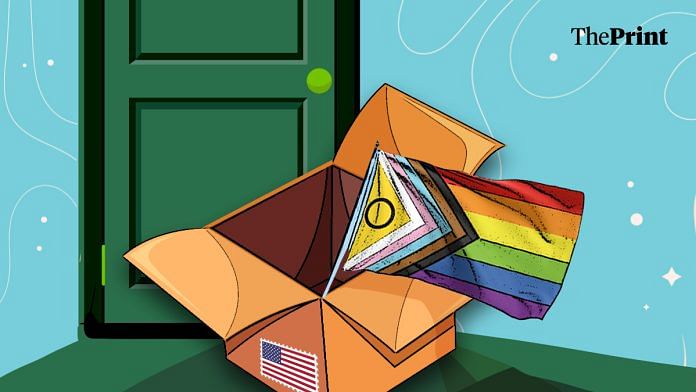The practice started, like all good things about American queer culture, in the ballroom scene of the 1980s.
So, where’s the problem, you ask? After all, reading is seen as a bonding method—the firm handshake of the queer world, if you will. It helps you size up your peers, sharpen your wit.
My problem with desi gays trying to read is that they don’t recognise how different their world is from that of an American drag queen. When they read, they end up making the young, thin, fair, and obviously upper caste gay man the ideal. He has 13 per cent body fat, clear skin, and is getting a ‘sickening’ new outfit made for his 21st birthday.
Why do we have to rely on American cultural imports and language to define our exchanges in India? We have enough in our own culture to dip into. Therein lies the rub. Drag in India is elite. It plays out in Kitty Su and the Lalit. We’re sad about the drag bans in the US, but don’t care about horizontal reservations in India.
Stonewall remains our frame of reference, and ABVA (AIDS Bhedbhav Virodhi Andolan) is unheard of. We know all about the inspiring Marsha P Johnson, but ask us about Mona Ahmed and we’ll come up empty.
To be fair, for many of us, it is American shows and films that teach us what our own queerness is. It is formative for baby queers here. But how are we Indianising it? We can’t just slap samosas and mangoes on Black culture and call it desi queerness. It’s lazy and exploitative. Worse still, it’s cringe. But is there an Indian way of being queer?
There are several—hijra, kothi, and the jogti communities. But the only way they can interest a Drag Race queer is if an ‘intersectional’ seat opens up on a panel of savarna gay men.
For city gays to create a culture that is their own, they’ll have to first leave the spotlight. Which will hopefully lead to a de-elitising of Indian queerness.
After all, culture can’t exist where community doesn’t.
When I first came across reading, I was fresh off the Modern Family type of queer narratives, consumed on Star World in the lonely hours of Malegaon nights. So when this edgier, cooler, meaner kind of queerness came along, I was hooked. And being read—allowing other queers to see your insecurities—felt radical. It took away some of the world’s power to hurt you.
This was when I was doing my master’s some centuries ago. I began reading my best friend about the size of his forehead while he read me for my grey-and-blue straight man wardrobe, my small-town pleather loafers, and my belly flaps.
One day, my friend shared an article on how a culture of meanness pervaded gay friendships. We realised some reads cut deeper than we had allowed ourselves to see. We were quick to learn our lesson though, and sappy as it sounds, we took care to be kind to each other, keeping the reads to low-level shade.
Of course, I still watch Drag Race every Friday and talk about it in a Telegram group of desi gays. Much as I’d like to decolonise my queerness, all I have to show for the effort is liking Reels by trans model and dancer, .
So, if someone knows the way out of consumption and into community, I’m all ears. Until then, I’ll just have to do my part by marinating in guilt beside my Pakeezah poster.
(Edited by Theres Sudeep)








